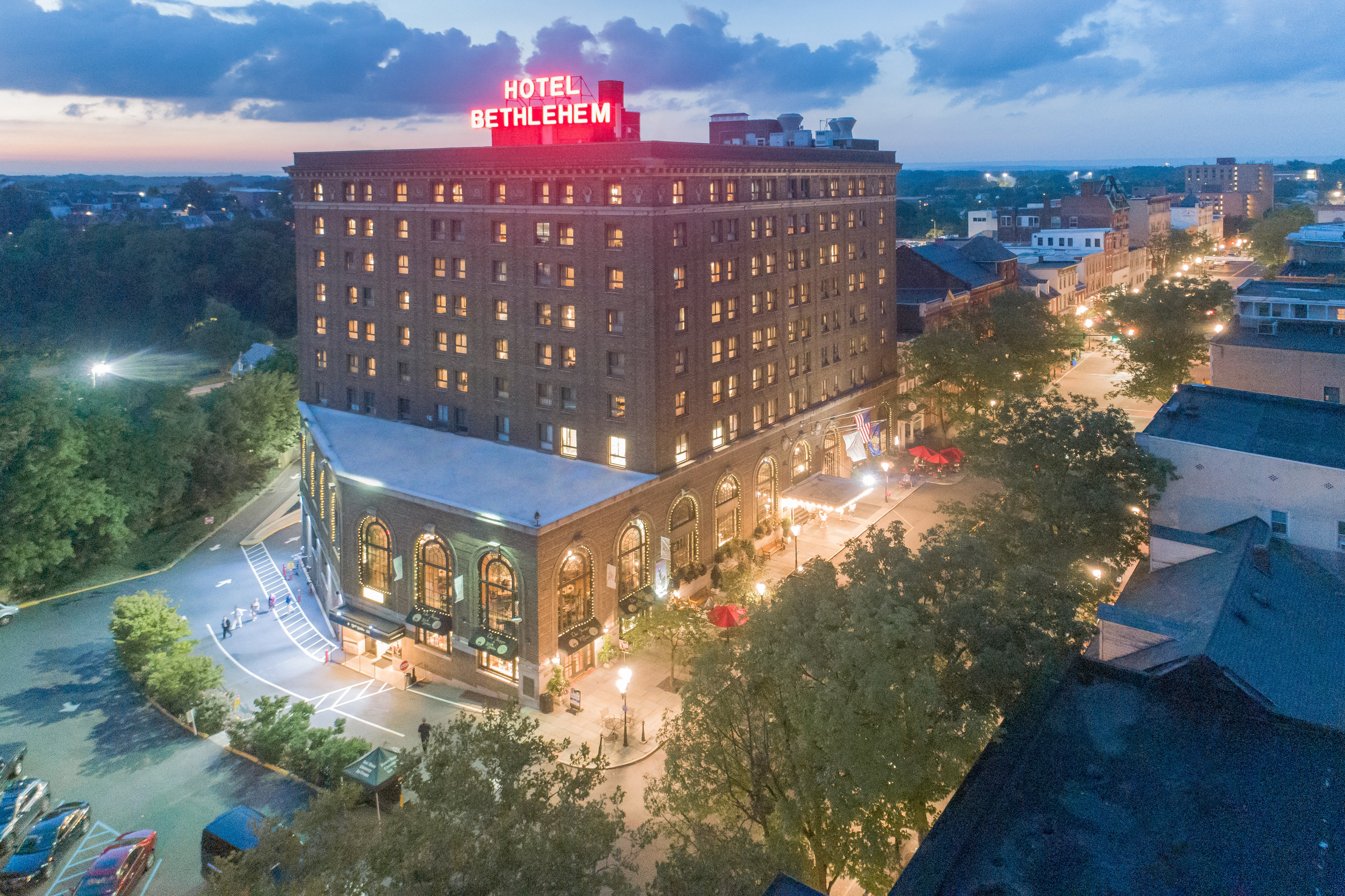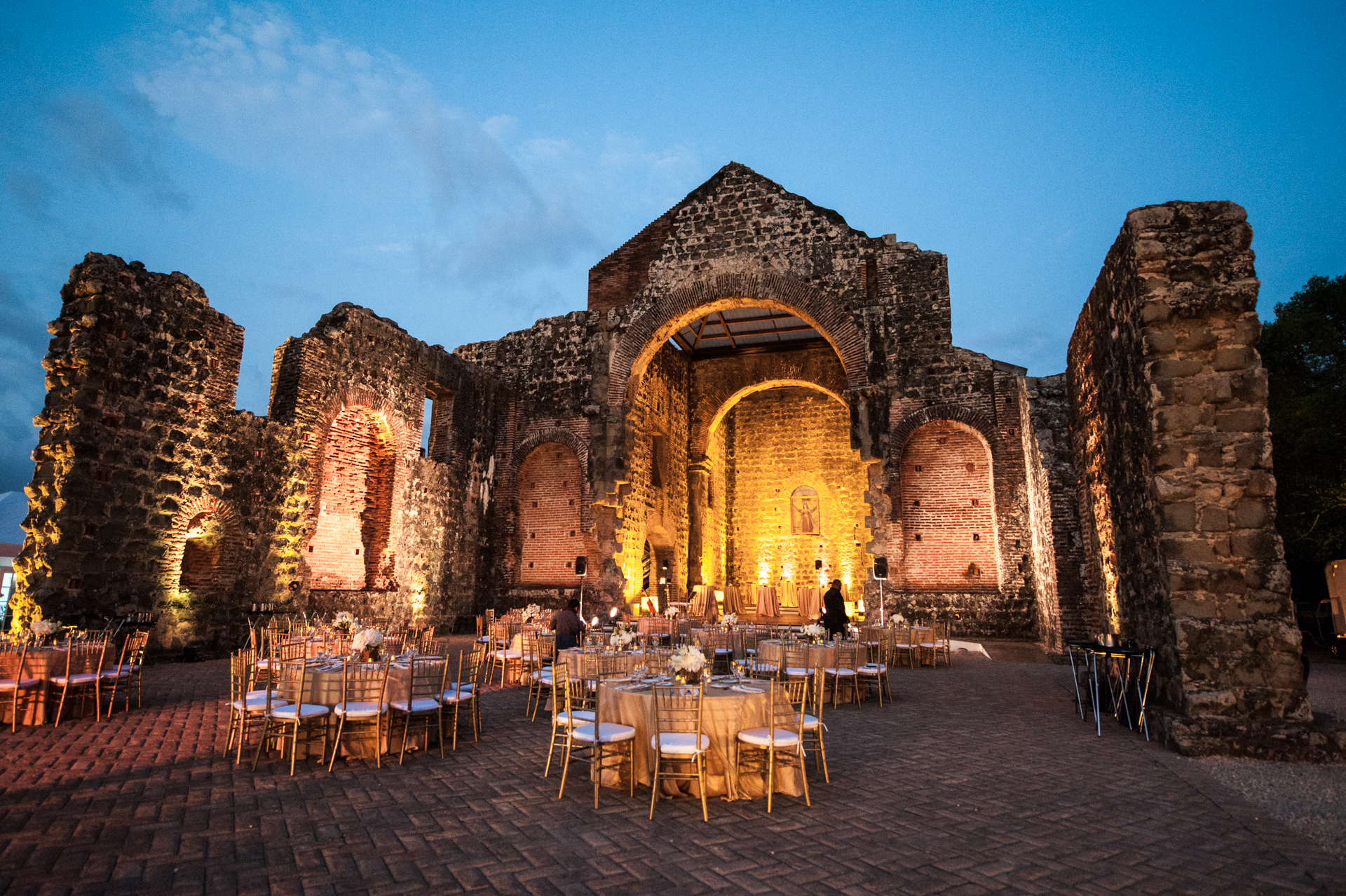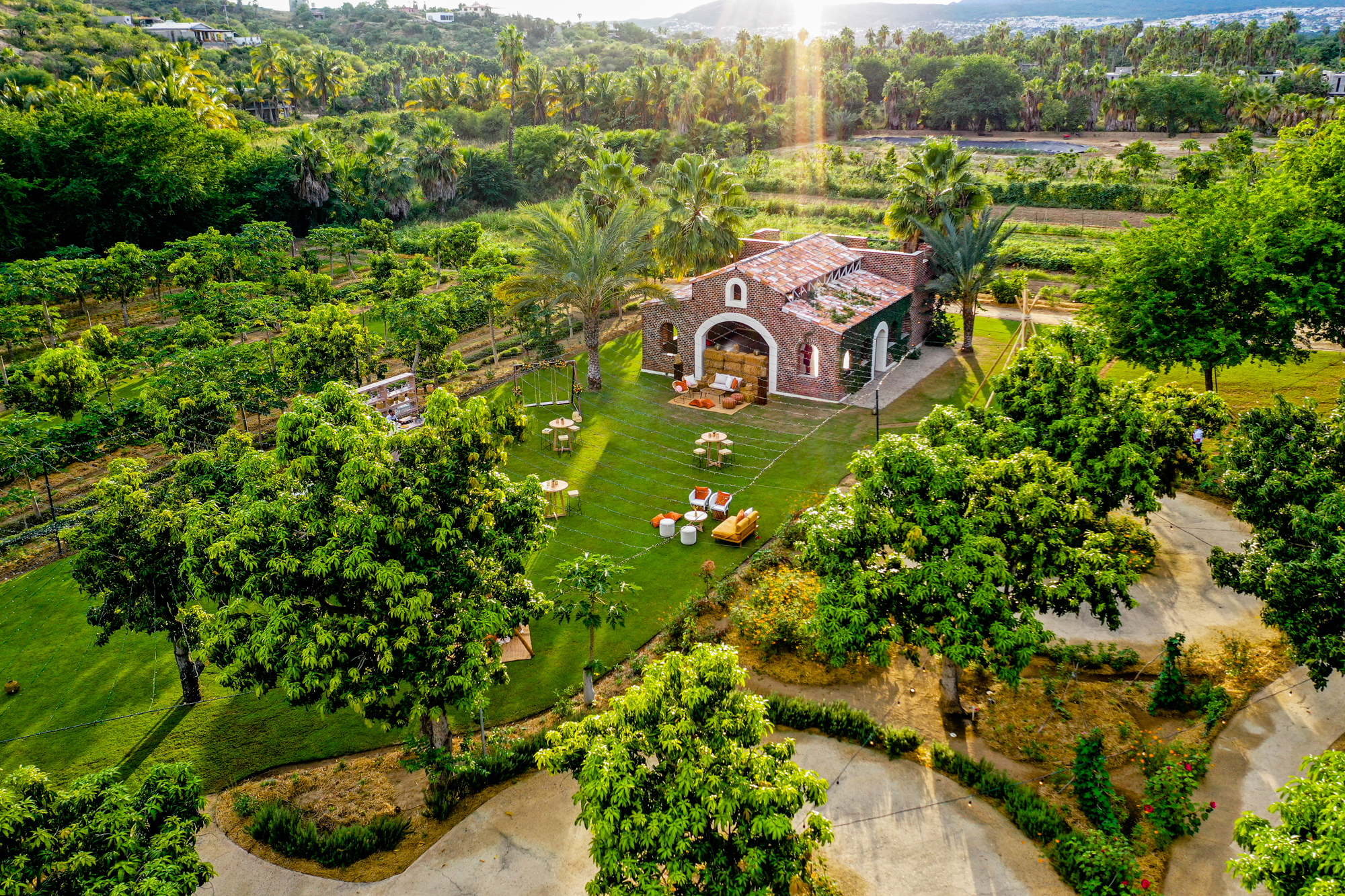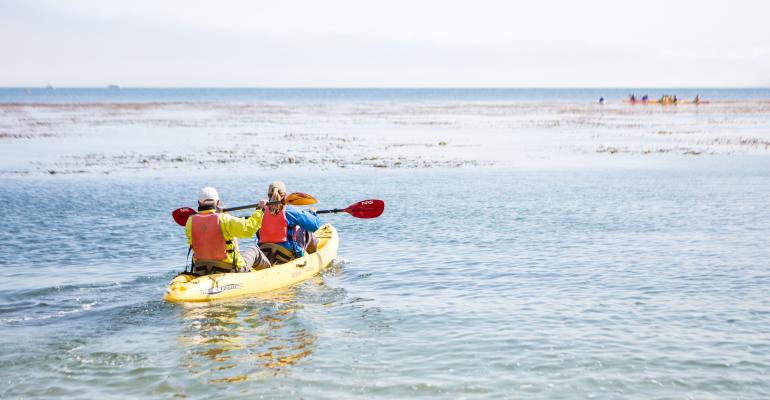Picture this: the invites for your corporate event go out, and as soon as people receive them, the wheels start turning. People immediately look at their PTO, their schedules, even their partner’s schedule. They’re looking to make a vacation out of the trip.
Maybe you find yourself doing the same: when you plan your trip for an upcoming event, you slide in a day or two to explore the area on your own. You look for ways to squeeze in personal time before or after you have to be on-site for your event.
This is the mindset of the modern business traveler, and as “bleisure” becomes the preferred method of travel, it is changing the way hospitality and events cater to travelers and attendees.
Here’s all you need to know about this rising travel trend, which might be here to stay—including how to plan destination events in a way that attracts higher attendance and engagement.
All about bleisure
A combination of the words “business” and “leisure,” bleisure describes the intentional combination of business trips with leisure travel. The word was first used in 2009 by consulting group Future Laboratory, though we’ve experienced a spike in bleisure popularity as a response to the COVID pandemic travel restrictions (what some are calling “revenge travel”) and the increase in remote jobs. But bleisure is more than a spike in vacations or a lifestyle abroad; it is motivated mainly by already-occurring business trips, with work being the focus and leisure squeezed in. And why not? If you’re already traveling for work—a task which is known to be stressful, fast-paced, and intense, with little to no time for oneself—you may as well use the plane ticket to add a vacation and extra fun, should the circumstances allow.
Even before COVID, extended bleisure trips were on the rise. Expedia Group reported that in 2016, 37% of business travelers extended their trips for “leisure purposes.” In 2018, that number had grown to 60%. This upward trend picked up where it left off and continued rising after COVID. A Forbes article from 2022 noted that “bleisure was growing before the pandemic but has taken off recently. It’s poised to take over traditional business travel in 2022 and beyond. 89% of people plan to add personal vacation time to their business travel this year—many of whom will bring family and friends along.”
An article from Skift Meetings lays out the common components of bleisure trips:
- Extra days at, or near, a meeting or event location
- A travel companion (more than 54% reported this)
- Using frequent flyer or loyalty programs to defray the cost of the second traveler
- Research and apps to make the most of shortened time frames for travel, like seeing Manhattan in two days
- Relying on review sites for information
- Desire for cultural experience or enrichment
Conference goers and destination event attendees are prepared to milk their trips and pack in as many adventurous experiences as possible—the event is merely an excuse for exploring a new destination.

The Historic Hotel Bethlehem in Bethlehem, PA, has seen an increase in bleisure travelers and its staff must act as experts on everything happening and everything to do in the area. Photo courtesy Historic Hotel Bethlehem
Who is bleisuring?
It should be no surprise that the younger generations are leading the way in bleisure travel. Forbes reports that 78% of millennials add personal time to the beginning or end of a business trip.
Travel management company Carlson Wagonlit reports that bleisure travel is most common among millennials age 25–34; though the second largest demographic of bleisure travelers is in the age range of 36–54 and has an average annual income of about $80,000. Younger travelers also tend to choose different lodgings than those chosen for the business event.
The Skift article clarifies: “According to the Exploring the Generational Divide in Business Travel from American Express and the Global Business Travel Association, Gen Xers and Baby Boomers tend to stay at the same hotel for business and leisure portions of their trips, while those under 35 and frequent travelers look for other options based on location, price, and convenience.”
If your event attendees tend to be aged 55 and under, you should expect a decent portion of them to be using the event as leverage for experiencing a destination on their own terms.
Bleisure is here to stay
There are myriad reasons why business travelers are choosing to turn their work trip into a “workcation,” a prevalent one being wellness.
In an article for the BBC, Jeanne Liu of the Global Business Travel Association said that “Travel wellbeing relates to job satisfaction, which means people stay productive and stay longer in their jobs.”
Flexibility in work situations can create better work-life balance, especially at work events that are historically known for being fast-paced, long, and somewhat tedious.
Kate Patay of Terramar, A DMC Network Company, says that planners and their teams can benefit from incorporating leisure into their
own event travel as well. “Budgeting for team members to come in a day pre- or post-event is not only great for employee morale, but it helps to give the traveling businessperson some much-needed downtime to combat the stress of travel.”
As COVID “revenge travel” stays strong, combining work trips with leisure allows people to recharge and explore new places—and sometimes scout locations for returning work trips and other future destination events.
People are also keen on combining business and leisure because it allows them to minimize travel, reducing their carbon footprint as well as the cost of travel, since much of the trip is paid for by their employer.

What's old is new when hosting an event in Panama. Photo courtesy Terramar DMC
How to plan for bleisure travelers
So, what can planners do to take advantage of the bleisure crowd?
The right destination
To start, it’s important to choose a destination that attracts bleisure travelers. They are more likely to come to an event that they know they can turn into a personal vacation, especially if it’s a popular place to visit.
Patay encourages looking at destinations that have unique activities and locations. “Warm weather and beach destinations like San Diego and Puerto Vallarta always see bleisure travel pickup, as well as food-and-wine specific destinations like Napa and Chicago (one of my personal favorite foodie cities),” she says. She also notes that there are plenty of popular destinations for all types of price points. “If you were actively trying to give attendees this option, yet stay within a tighter budget, you can choose a city like Reno for the hotel block and the main group, and then have activities and excursions close by in Tahoe, which is only 45 minutes from Reno.” She adds, jokingly, “And it should basically be illegal to come to Reno and not visit Tahoe.”
An article from TechTarget notes that there are other factors to consider in a destination besides its bucket-list quality. To start, it should also be safe and affordable, as well as easily navigable, not only by walking but by subways, buses, ride shares, and car rentals. Travelers will go out and enjoy the location if lodgings, restaurants, and activities have several price points. Destinations will also bring more bleisure travelers if they have a variety of activities to choose from, including museums, historical attractions, outdoor shopping, and other entertainment.
Kelly Ronalds of the Historic Hotel Bethlehem in Bethlehem, PA, believes the entire destination is the event space. “In the past, planners have always, in my opinion, been focused very much on meeting space size, what are the breakout rooms—the actual construction of the event itself, and I think they have to look beyond the four walls of the hotel [or venue].”
Patay agrees: “Hosting your meetings in popular tourist destinations and bringing the actual meetings to life outside of the ballroom are great ways to increase attendance.”
Programming
No longer is your event itinerary the sole itinerary of the trip. If there are must-visit restaurants, trendy tourist attractions, or even a popular concert in town, you can be sure your attendees will make time to go.
To keep travelers engaged, create an itinerary that accommodates extra activities while giving them a reason to attend the full event. If the days end too early, people might dip out to do their own thing, so make sure to create programming that your crowd doesn’t want to miss, especially with some sort of big bang on the last night. Offer pre- and post-event activities to keep your attendees engaged and to allow them to explore the destination together. You can even build in breaks that take place nearby—at a beloved local coffee shop, say, instead of in their hotel or a conference center lobby.
Another thing to keep in mind: many bleisure travelers are bringing along partners, family, and friends, either for the entirety of the trip or for the extended portion after business ends. Create schedules that accommodate partners or plus ones, even accounting for them in your programming. Choose event locations and venues that are centrally located, so that partners can stay occupied nearby—or even join in for a cocktail hour here and there. If you really want to impress your attendees, make a resource guide for partners, family, and friends that have tagged along.
Especially with younger attendees, allow time for local exploration. Gone are the days of all work and no play; with wellness and work-life balance finding their way into business culture, bleisure travelers are looking to make the most of both their work and their personal time.
“I’m hyper aware of leaving plenty of time in the attendee schedule for leisure and time on their own so that they can opt to either stay caught up on emails and what’s happening in the office or go out and explore on their own,” says Patay. “When they come back into the meeting they tend to be refreshed and engaged, so it’s a win all around if you build in personal time to every agenda.”
Activities
Ronalds observes that pre-COVID, people would come for business, dine in the hotel, and hole up in their rooms. “The business travelers were kind of disengaged, right? They came in, you know, they might have breakfast with you, and then they were gone all day; they came back, they went up to their rooms and then they worked,” says Ronalds. “Maybe they would order room service.”
Now, she observes people coming for business and using their free time to explore the destination, often scouting the place for future business-related events. “Now, it’s like, ‘What can I do besides that?’ They’re not cooping themselves up in their rooms, they’re down in open spaces... They’re coming to the desk and saying, ‘Where are the running trails, where are the walking trails?’”
Ronalds has noticed that travelers want to proactively engage with others. Often, she gets requests for guided walking tours, with people actually avoiding self-guided tours. “It’s, ‘Oh, Kelly, I saw the sign about history walking tours, where can we do that?’ I say, ‘Well you can do it on your own if you download—’” but she’ll get interrupted: “‘No, no, no, I want somebody to walk me around so I can ask questions.’” In a post-pandemic world, bleisure travelers are looking for ways to connect with their coworkers as well as the location they’re staying in. “They want engagement.”
This can take many forms, from kayaking outings to escape rooms to workshops and classes with local businesses to volunteering for a local charity. It can look like entertainment, too—74% of frequent business travelers wish their corporate travel policy included a budget for entertainment, says tour booking software company Regiondo.
Increasingly, this also looks like dine-arounds. A lot of companies have gone remote and hired new people in the span of a few years, Ronalds reminds us. There are seasoned employees working alongside new hires, and with no physical offices, employees are looking for organized play to get to know one another better. Everyone must eat, so eating out with coworkers after the business portion of the day is a popular activity. This is also why destination employee retreats are gaining popularity, says Rolands; they provide a work-leisure setting for coworkers to bond in-person instead of through a screen.
The main idea is to get creative in taking your event outside of a single venue.“Bleisure travelers like to experience a city outside of just a meeting and convention space, so think of a destination highlight that’s Insta-worthy,” Patay encourages, “like the famous arches in Cabo, or a foodie tour like Lip Smacking Foodie Tours in Las Vegas, where you get to sample the signature dish at multiple well-known restaurants.
“Bonus points for taking a meeting offsite into a unique venue like a museum or a marine vessel—when it’s properly communicated and made accessible to all, the attendance is usually close to 100%.”

Los Cabos is more than beaches: a lush green backdrop at Flora Farm is sure to surprise and delight guests. Photo courtesy Terramar DMC
The best of both worlds
One way to really know what your bleisure attendees want is to practice it yourself.
“A great way to really experience a destination you are traveling to for business is to add a shoulder arrival or departure so you can take additional time to explore and see from a local's perspective what it’s really like,” says Patay, a fan of bleisure.
“With the majority of my travel having at least one flight connection and taking a full day, I personally add time to each of my trips to arrive and explore the destination and have some much-needed quiet time before I jump straight into an event. This also is a great way to be the person everyone comes to during an event to ask for ideas and recommendations, because you’ve already gotten the lay of the land. It’s a great networking tool!”
Working with the bleisure crowd means that you get to play the role of both event producer and tour guide for your attendees, although you don’t necessarily have to become an actual expert. Utilize DMOs and CVBs as well as hotel concierge, because they are the actual destination experts and can work with you to compile resources and ideas. You might even be able to work out some pricing discounts on hotels or other activities by partnering with local experts.
By mixing business and pleasure, you will attract the bleisure crowd, catering to their adventurous side while keeping them engaged in your event.
If there’s one thing that the event industry excels at, it’s gathering people together to create connections and memories. Lean into your creativity to make the average work event a chance for business and leisure, and your event will inevitably satisfy attendees who are looking to get a little more out of their travels.
Bonus content:
15 Best Places to Visit for 2023–2024
- Paris
- Bora Bora
- Glacier National Park
- Rome
- Swiss Alps
- Maui
- London
- Maldives
- Turks & Caicos
- Tokyo
- Phuket
- Costa Rica
- South Island, New Zealand
- Tahiti
- Banff
Information above courtesy U.S. News & World Report
Top Incentive Travel Destinations 2024
- Mallorca, Spain
- Florence, Italy
- Lisbon, Portugal
- Guanacaste, Costa Rica
- Cabo San Lucas, Mexico
- Puerto Rico
- Bali
- Queenstown, New Zealand
- Bora Bora
- Hawaii
- Whistler, Canada
- Wyoming
Information above courtesy GoGather
Top U.S. Conference Locations 2024
- Las Vegas, NV
- Orlando, FL
- San Diego, CA
- Dallas, TX*
- Washington, D.C.
- Nashville, TN
- Cleveland, OH
- Denver, CO
* Editor's note: The Dallas Convention Center is poised to be torn down in 2024; Information above courtesy GoGather





